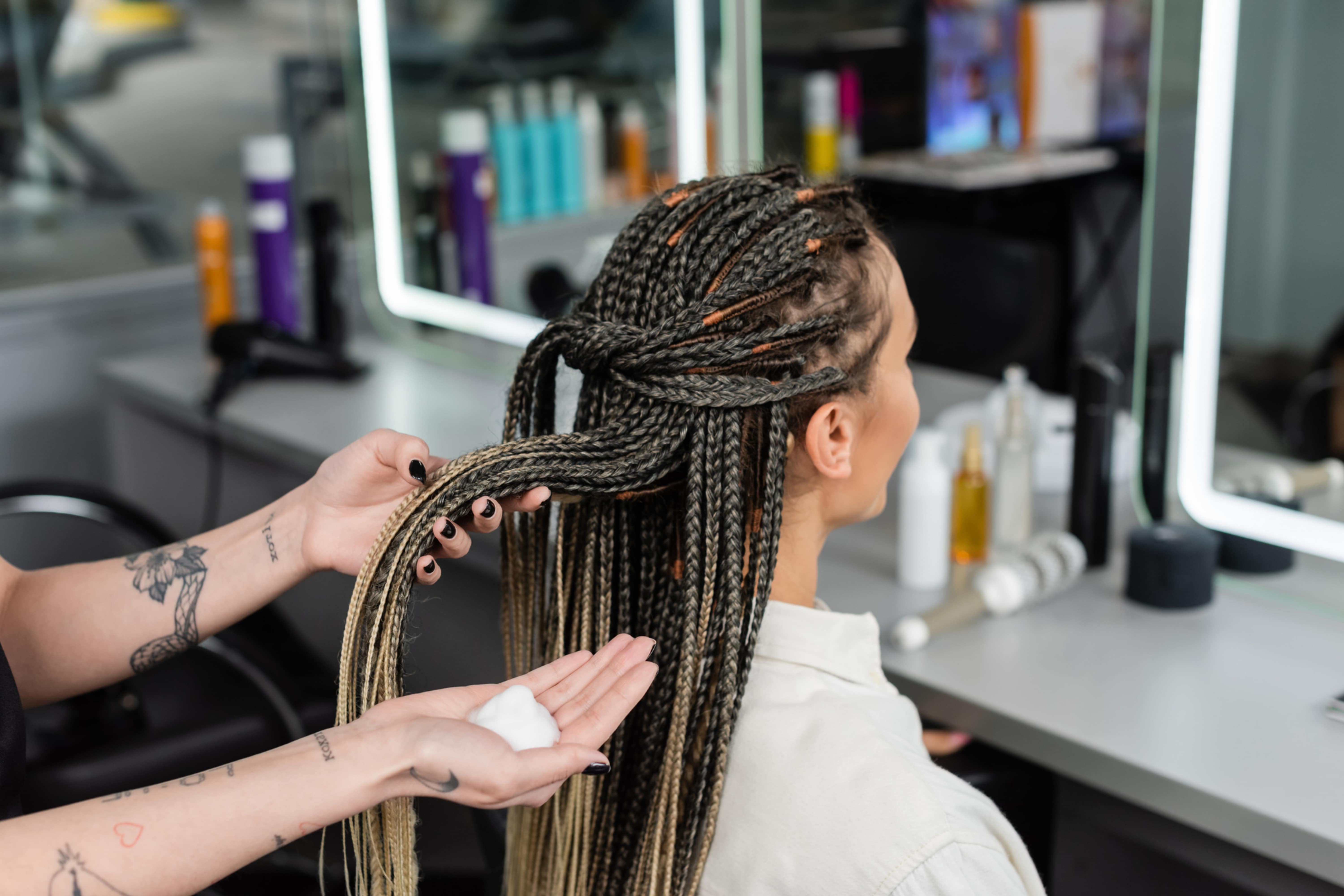Fulani braids, a traditional African hairstyle, have been a symbol of beauty, culture, and heritage for centuries. Originating from the Fula people in West Africa, these braids are more than just a fashion statement; they are a representation of a rich cultural history.
In recent years, Fulani braids have gained international acclaim, admired for their intricate patterns and the graceful way they frame the face. This article explores the versatility and elegance of simple Fulani braid styles, offering ideas for anyone looking to embrace this stunning hairstyle.
The Rich History of Fulani Braids
Origins and Cultural Significance
Fulani braids, also known as Fulani or Fula braids, have a deep-rooted history that spans centuries and continents. Originating from the Fula people, a widespread ethnic group found across West Africa and parts of East and Central Africa, these braids are more than just a hairstyle – they are a symbol of cultural identity and heritage.
The Fula people, also known as the Fulani or Peul, are one of the largest nomadic groups in the world, known for their rich cultural traditions, including language, music, and art.
The Fulani braids reflect this rich cultural tapestry, often characterized by intricate patterns, cornrows, and unique designs that vary from region to region.
Traditional Significance and Styles
Historically, these braids were not just about aesthetics; they conveyed a wealth of information about the wearer’s age, marital status, wealth, social position, and tribe. For instance, certain braid patterns were exclusive to marital status, while the use of particular accessories and adornments could indicate a person’s rank or achievements.
The traditional Fulani braid style typically features a unique pattern of braiding, where hair is cornrowed on the scalp, often in a front-to-back direction, with a coiffure in the middle of the head. The hair at the nape may be shaped into individual braids and adorned with beads, cowrie shells, silver coins, and other embellishments that hold cultural significance.
Modern Adaptation and Global Popularity
In modern times, Fulani braids have crossed cultural boundaries and have become a popular hairstyle globally, celebrated for their beauty, versatility, and the artistic expression they offer. While they have been adapted and stylized in numerous ways, the essence of the traditional Fulani braids remains, serving as a tribute to the rich heritage and enduring spirit of the Fula people.
By embracing Fulani braids, wearers today not only enjoy a versatile and beautiful hairstyle but also connect with a piece of African history and culture, paying homage to the artistry and traditions of the Fulani people.
1. Classic Fulani Braids
The Classic Fulani Braid style is the cornerstone of this traditional look. Characterized by a few cornrows running from the front to the back of the head, often with a signature braid down the center of the scalp, these braids exude elegance and simplicity.
To achieve this classic look, it’s essential to part your hair neatly and braid tightly from the scalp. The classic style can be adorned with simple accessories like wooden beads or rings for a more authentic appearance.
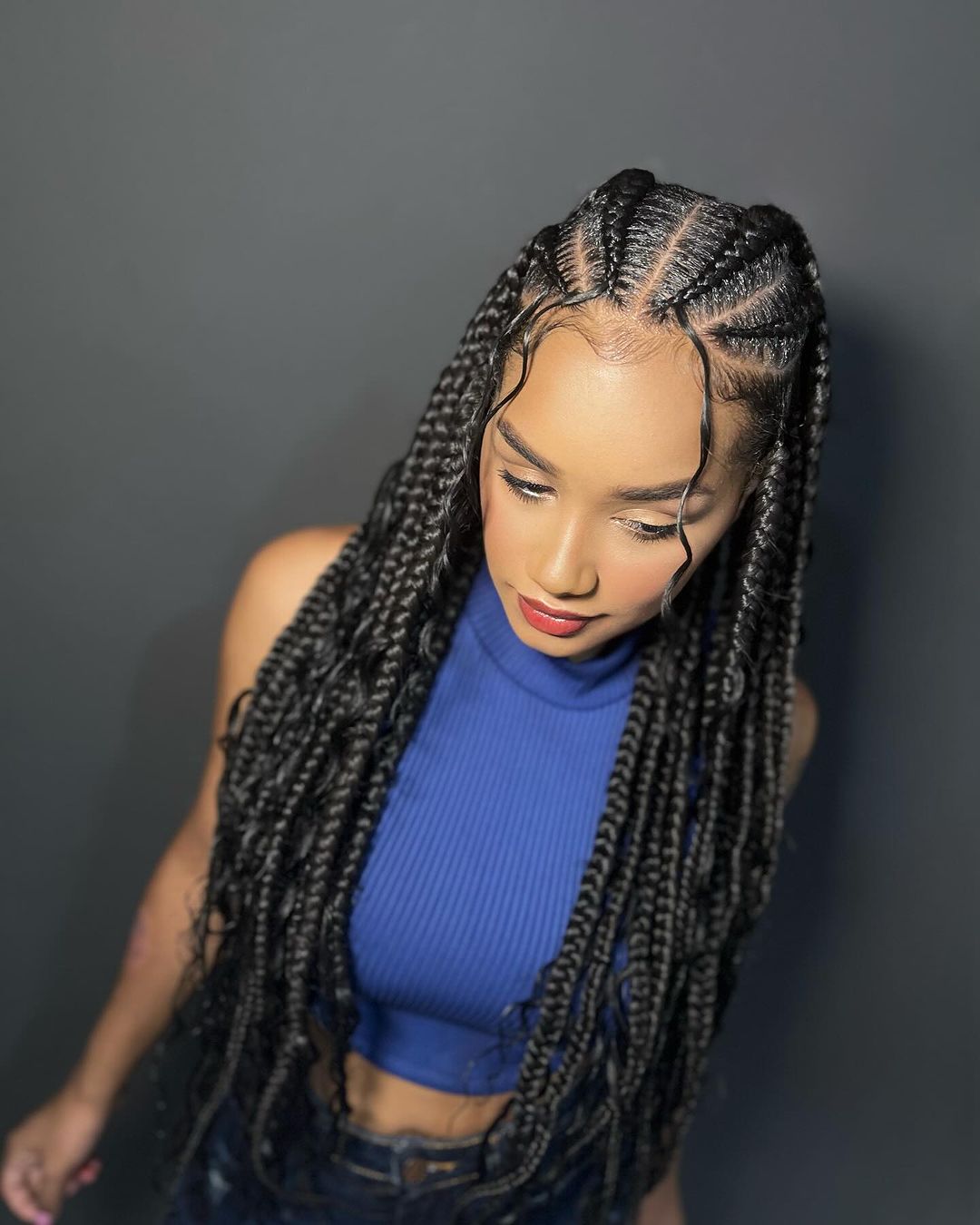
2. Fulani Braids with Beads
Fulani Braids with Beads add a vibrant and decorative flair to the traditional style. The integration of beads into the braids not only enhances their beauty but also holds cultural significance. When selecting beads, consider the size and weight to ensure they don’t burden your braids.
Colorful beads can be threaded onto the ends of the braids, adding a playful and artistic touch to the hairstyle.
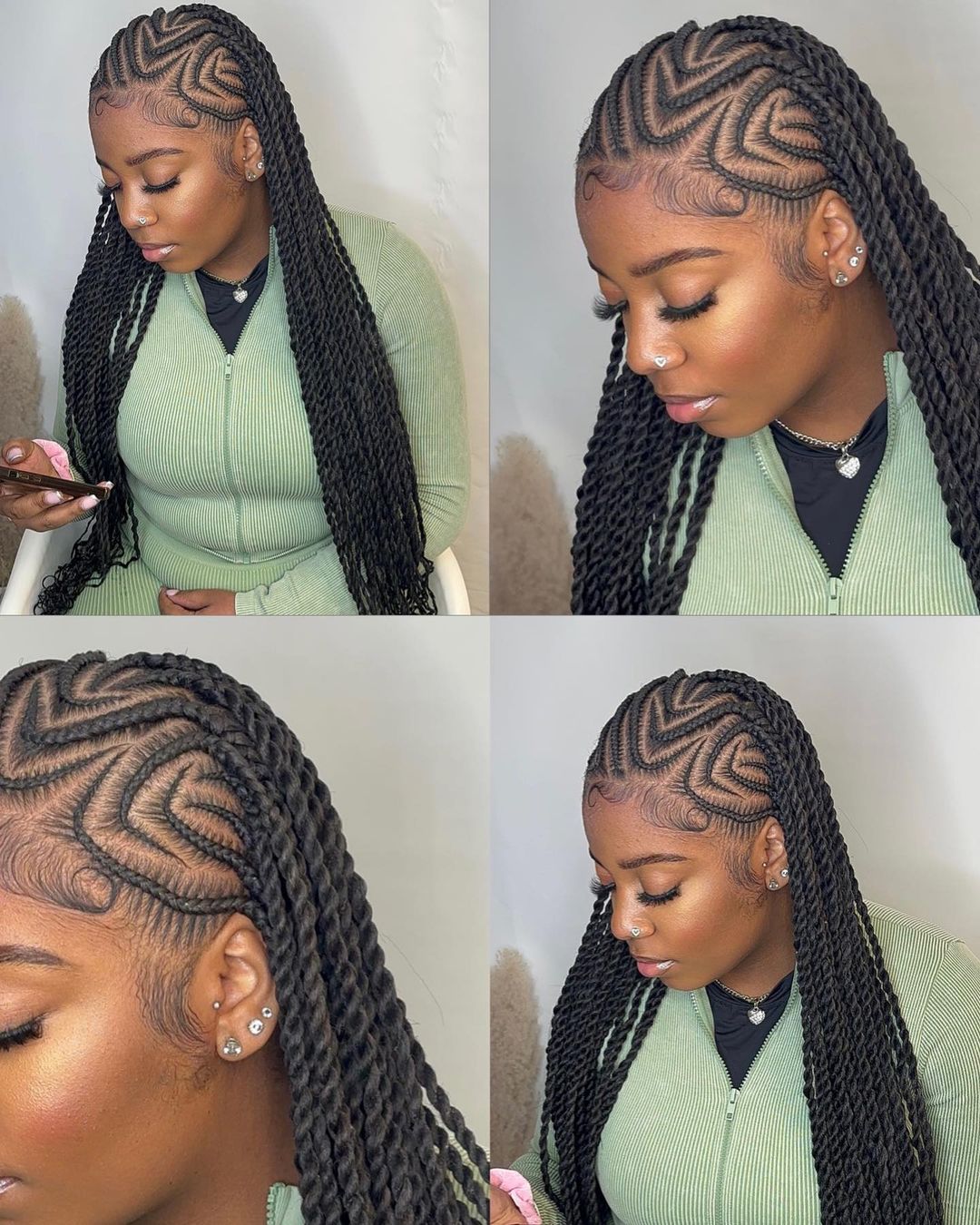
3. Half-Up, Half-Down Fulani Braids
The Half-Up, Half-Down Fulani Braid style offers a versatile and modern take on the traditional braid. This style involves braiding part of the hair in the classic Fulani manner, while leaving the rest loose or in smaller braids. It’s perfect for casual outings or formal events, offering a balance between sophisticated elegance and laid-back charm.
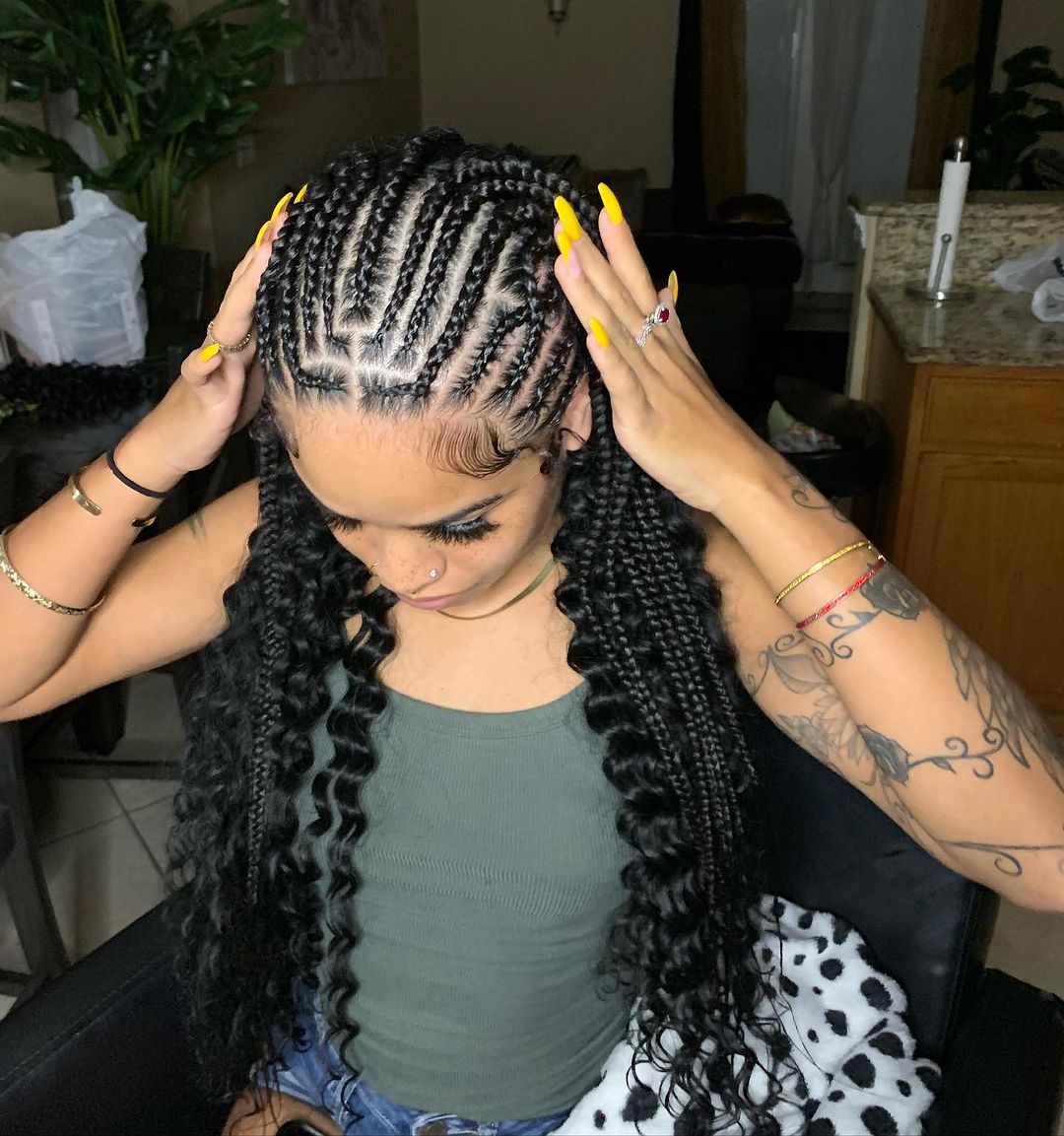
4. Fulani Braids with a Modern Twist
Modernizing Fulani Braids can be as simple as experimenting with braid sizes, patterns, or incorporating contemporary hair accessories. This adaptation keeps the essence of the traditional style while aligning it with current fashion trends. Think about adding metallic clips or incorporating unexpected braid angles for a fresh, modern look.
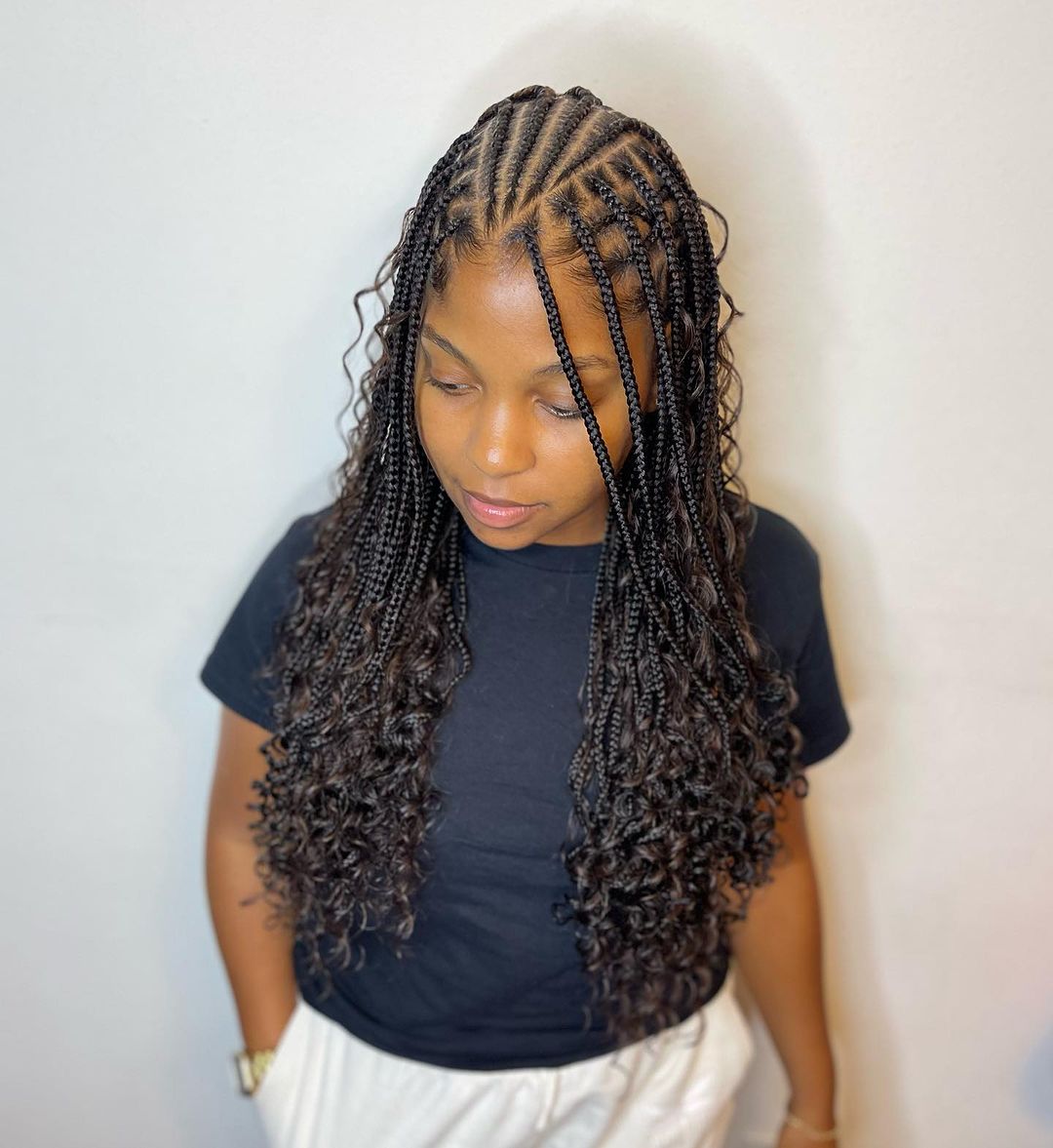
5. Colorful Fulani Braids
Colorful Fulani Braids introduce an element of fun and vibrancy. Whether it’s through colored hair extensions or temporary hair dyes, adding color to your braids can completely transform the look. Choose colors that complement your skin tone and personality, from subtle pastels to bold, vibrant hues.
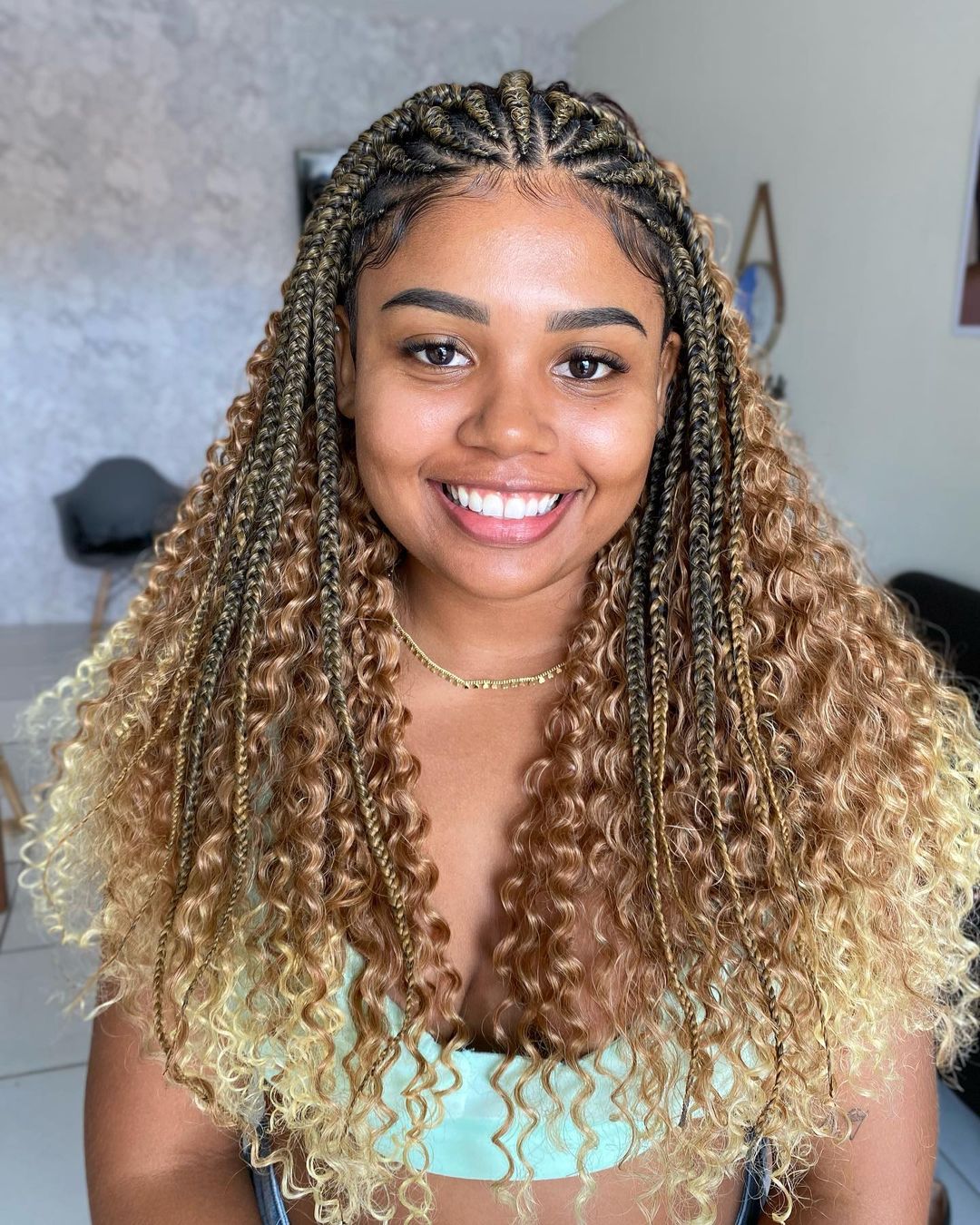
6. Side-Swept Fulani Braids
The Side-Swept Fulani Braid style is both elegant and functional. By sweeping the braids to one side, this look adds a romantic flair to the traditional style. It’s especially flattering for different face shapes, as the side-swept braids can be used to frame the face beautifully.
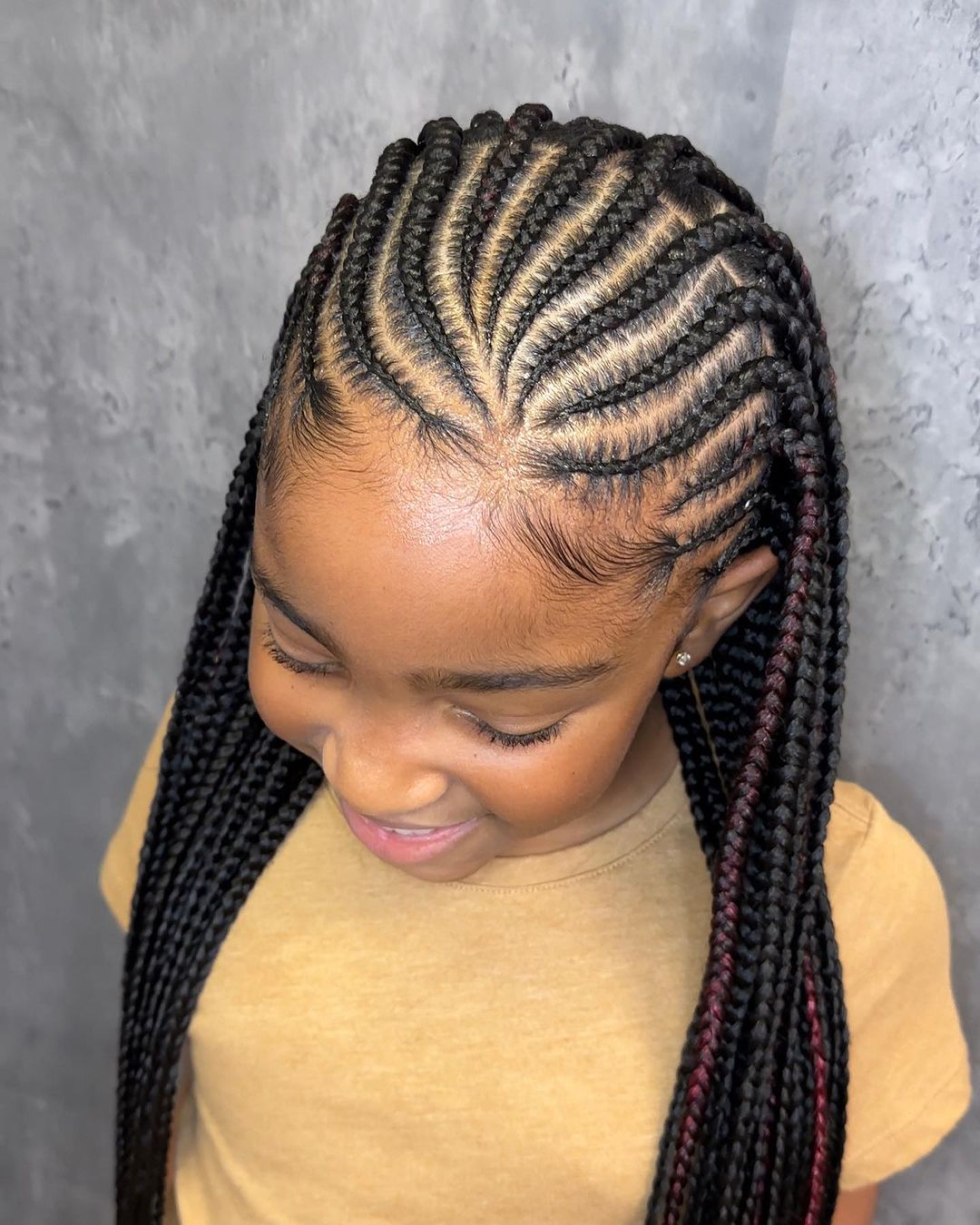
7. Fulani Braids with Natural Hair
Fulani braids done with natural hair celebrate the texture and beauty of unprocessed hair. When braiding natural hair, it’s important to keep the hair well-moisturized and to braid gently to avoid any tension on the scalp. This style not only looks stunning but also promotes hair health and growth.
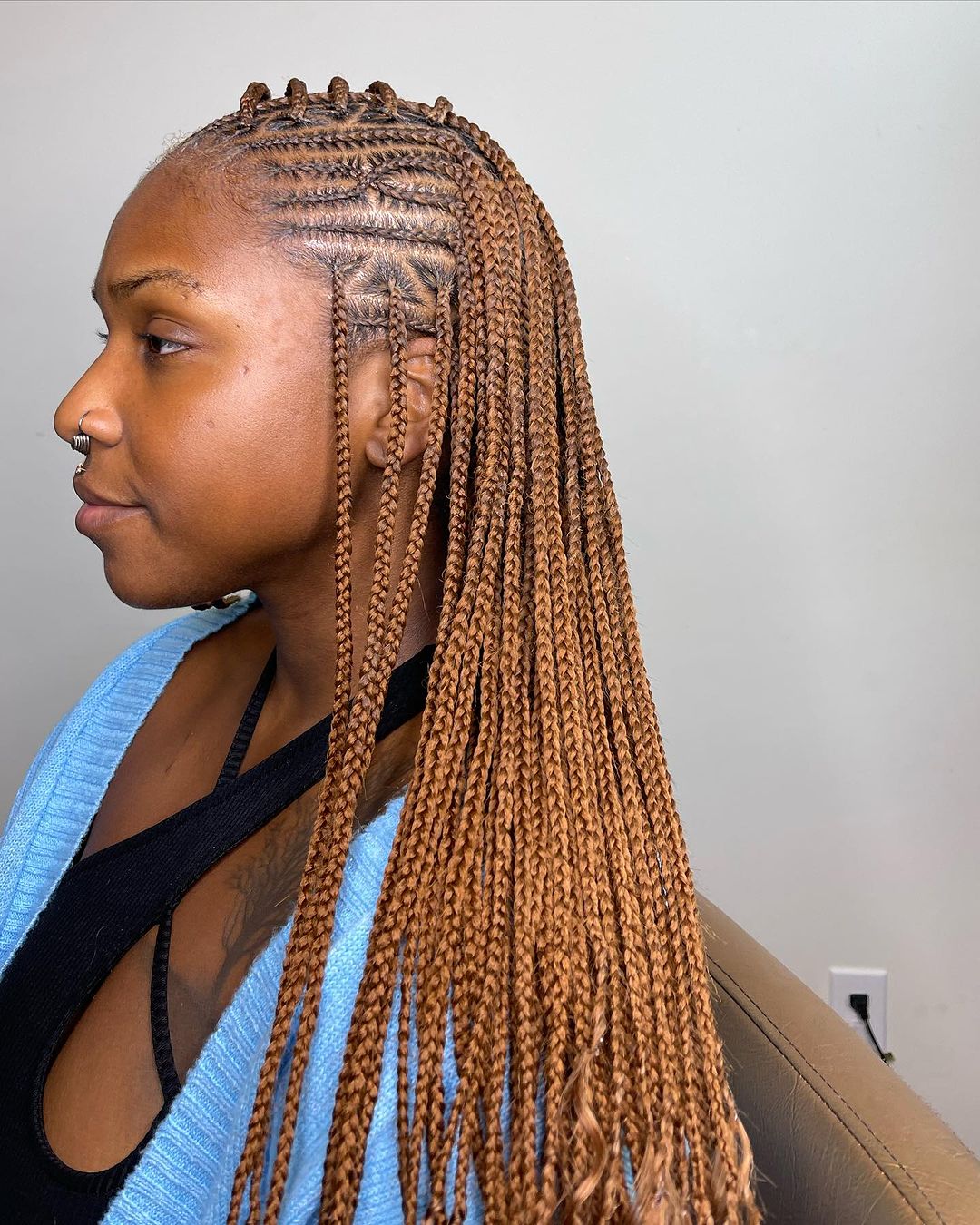
8. Short Fulani Braids
Who says you need long hair for stunning braids? Short Fulani Braids are perfect for those with shorter hair lengths. Techniques like adding extensions or focusing on intricate cornrow patterns can create a stunning braided style that defies length.
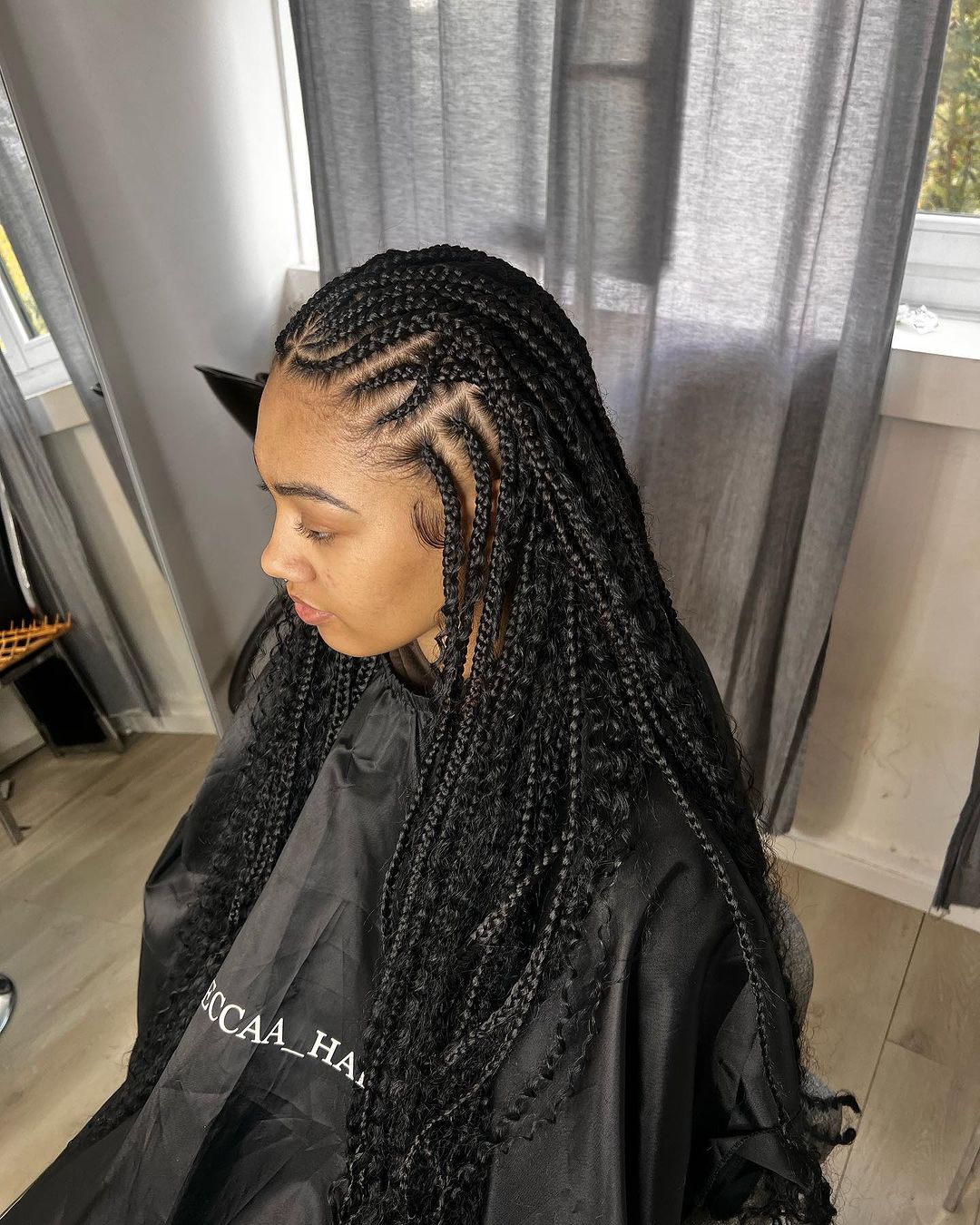
9. Long Fulani Braids
Long Fulani Braids offer a canvas for creativity, allowing for various patterns and designs. Whether it’s intricate geometric patterns or simple, sleek cornrows, long hair provides the length necessary for more complex and detailed braid styles.
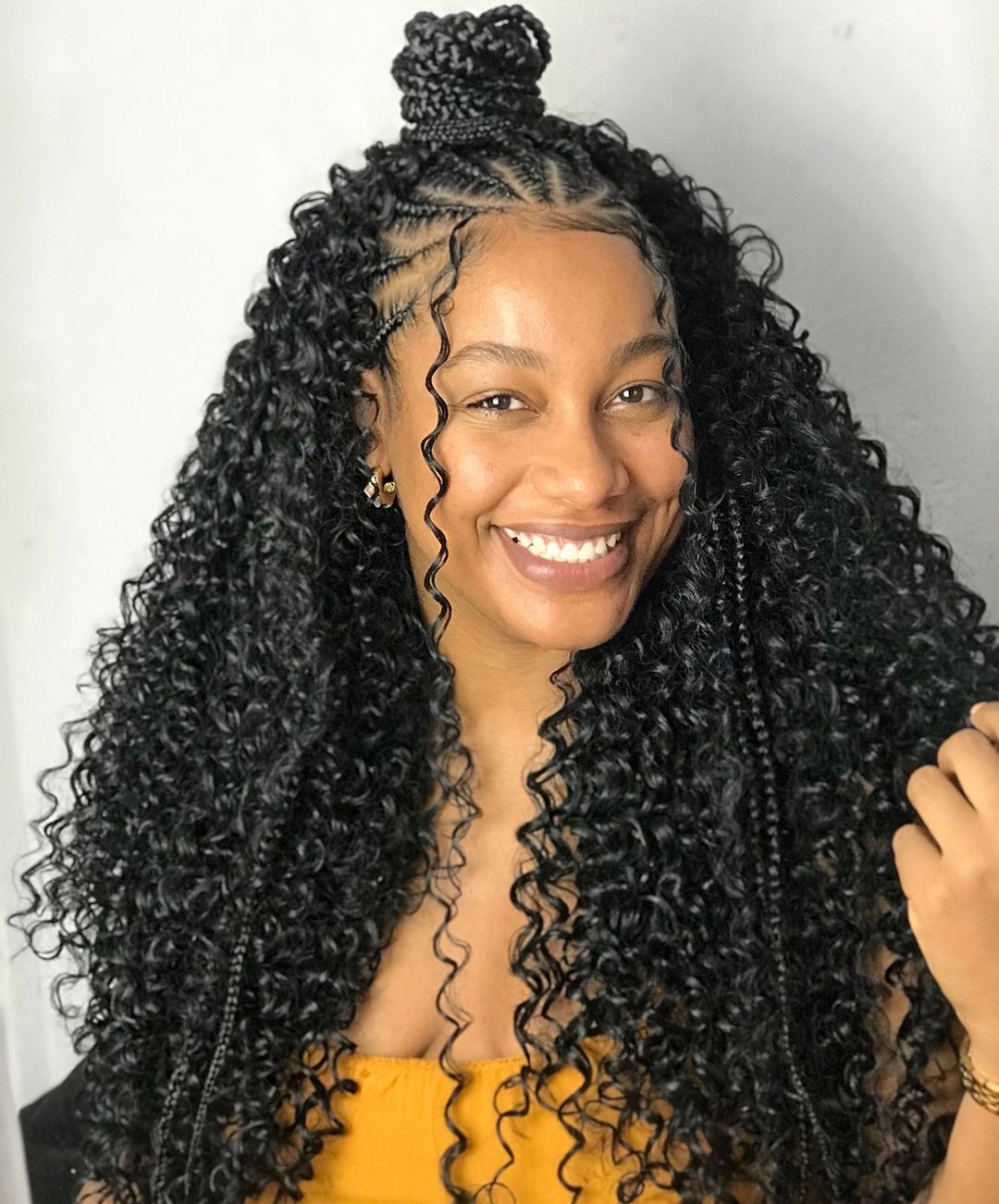
10. Fulani Braids Updo
A Fulani Braids Updo is a sophisticated way to style these traditional braids for formal occasions. This can involve sweeping the braids into a high bun or crafting an elegant braided crown. The updo is versatile and can be tailored to suit any event, from weddings to gala nights.
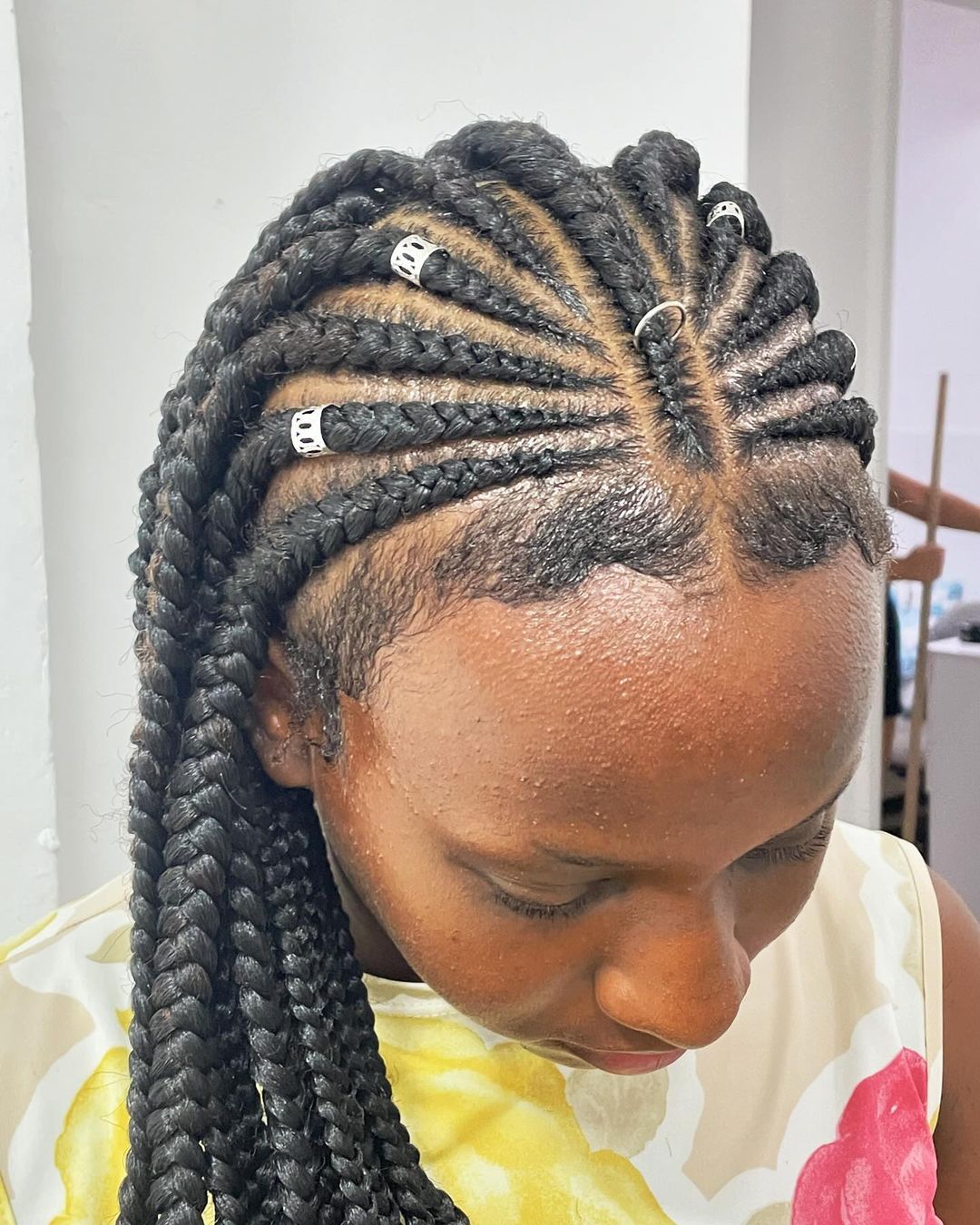
11. Thin Fulani Braids
Thin Fulani Braids offer a more delicate and intricate appeal. These finer braids require precise parting and tight braiding techniques, giving a more subtle and refined finish. The overall look is lighter and less bulky, ideal for those who prefer a more understated style.
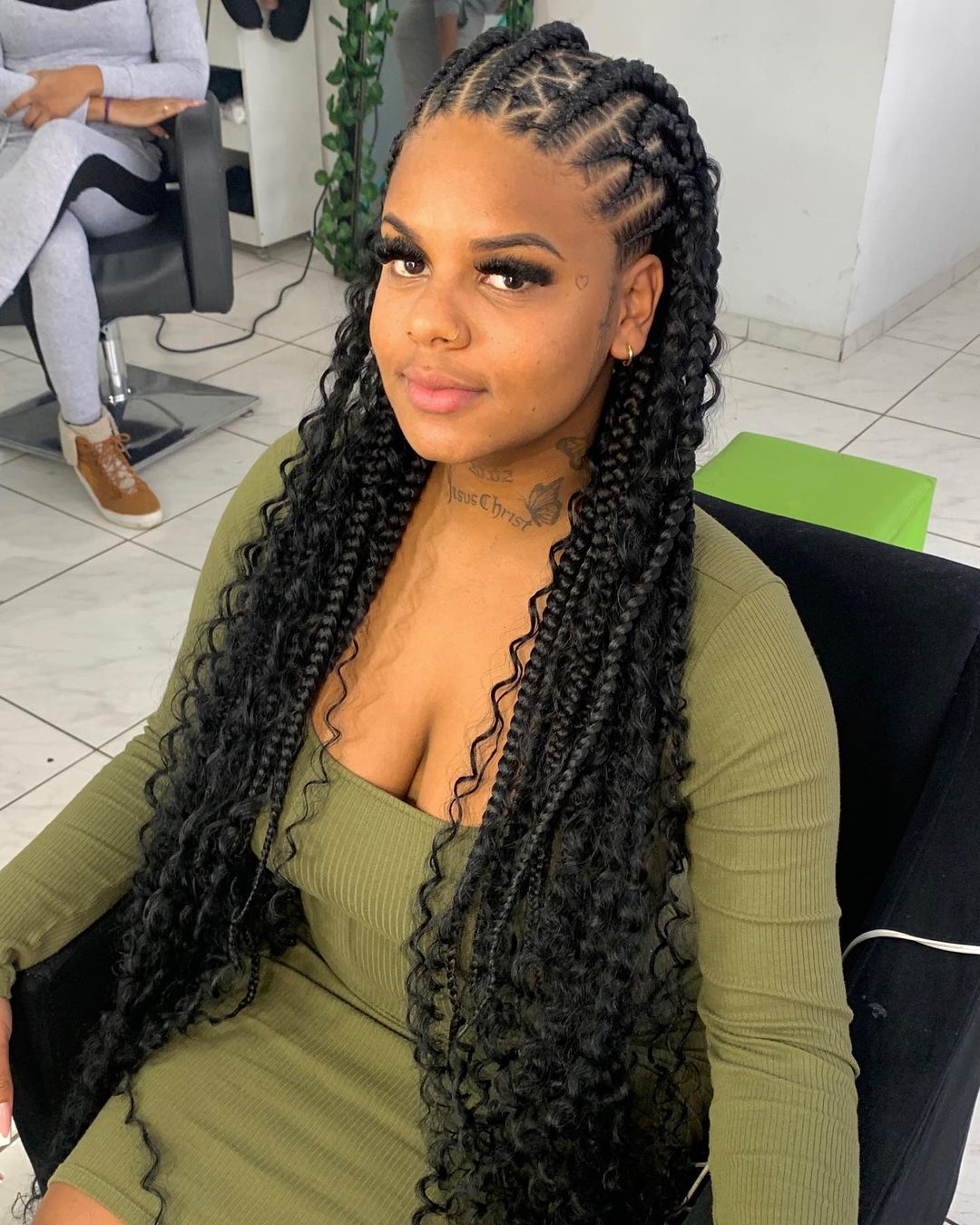
12. Chunky Fulani Braids
Chunky Fulani Braids make a bold statement. These thicker braids stand out for their volume and presence. When maintaining chunky braids, it’s important to regularly moisturize the scalp and ensure the braids are not too tight, to prevent any discomfort.
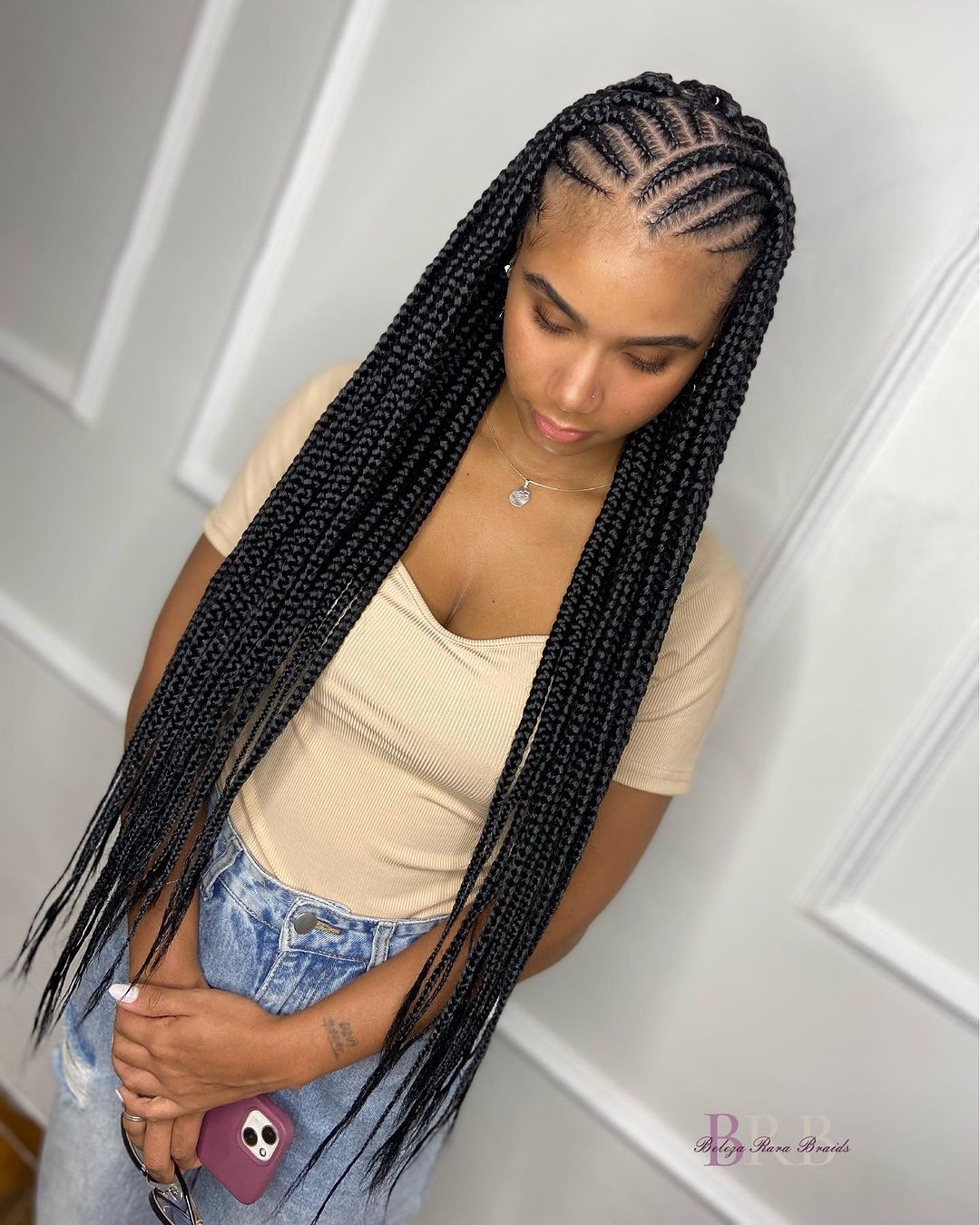
13. Fulani Braids with a Crown
Creating a crown or halo effect with Fulani braids turns the hairstyle into a regal statement. This style, where braids are wrapped around the head, is perfect for special occasions like ceremonies or celebrations, adding an elegant and majestic touch to your appearance.
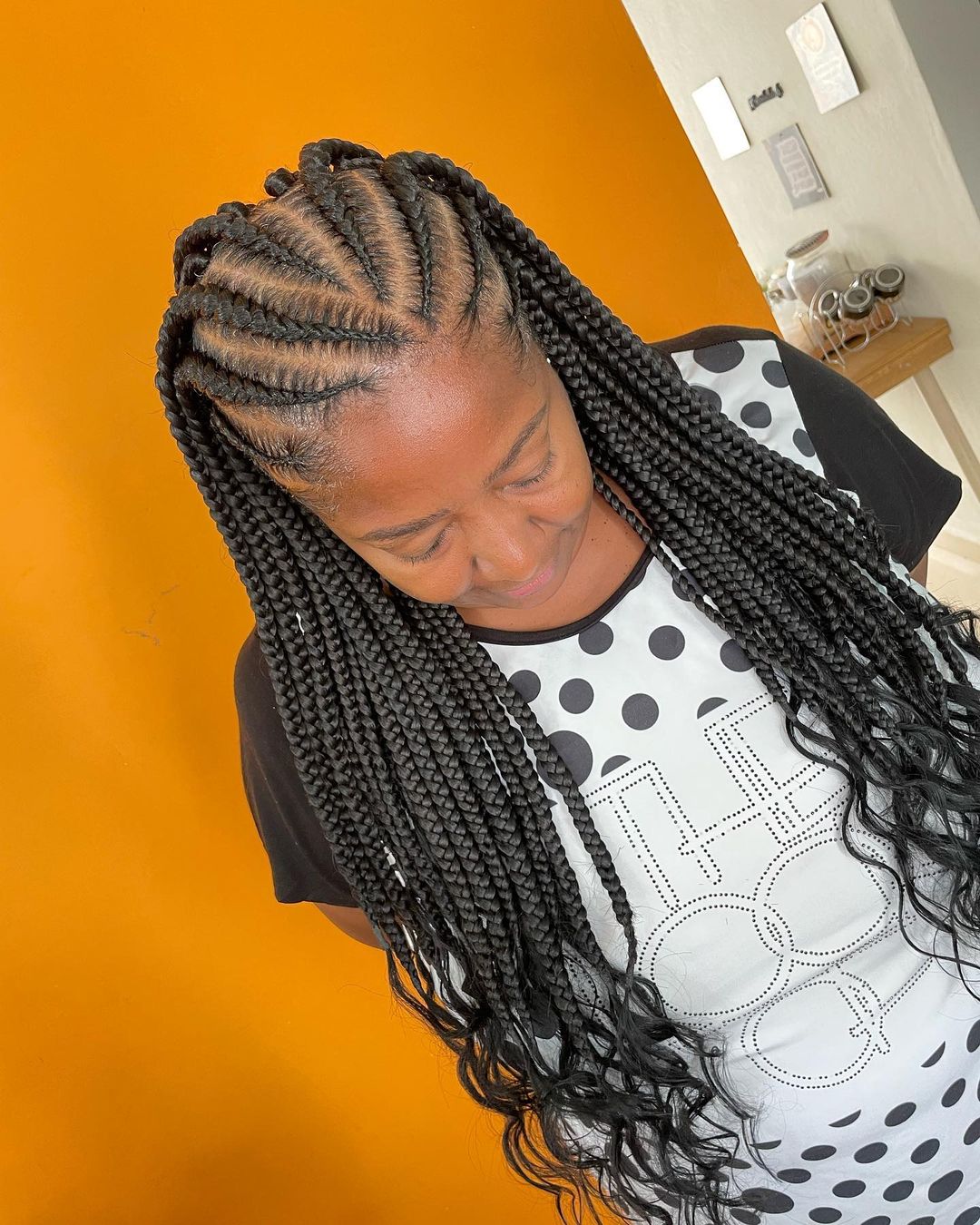
14. Fulani Braids with Accents
Accessorizing Fulani braids with elements like rings, shells, or wraps introduces a personalized flair. The key is selecting accents that complement the braid size and style, adding a unique touch without overwhelming the overall look.
15. Low Bun Fulani Braids
Styling Fulani braids into a low bun combines traditional braiding with a sophisticated updo. Ideal for formal events or professional settings, this style keeps the braids neatly tucked away, showcasing an elegant and polished appearance.
16. Fulani Braids with a Ponytail
Tying Fulani braids into a ponytail offers both practicality and style. This look can range from a high, sleek ponytail to a more relaxed, low-hanging style, making it a versatile option for various occasions.
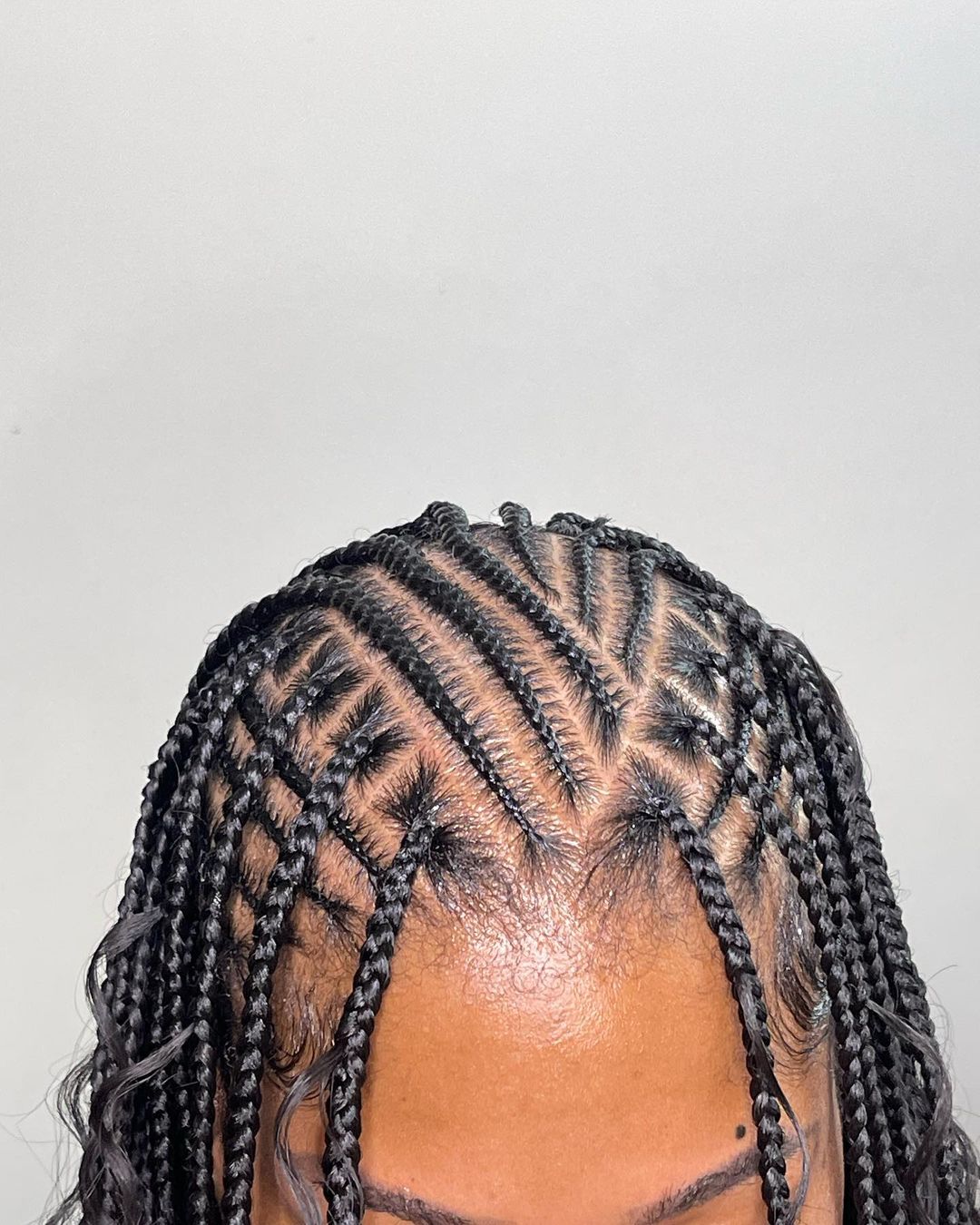
17. Bohemian Fulani Braids
Bohemian Fulani Braids blend the traditional braiding technique with a free-spirited, boho-chic aesthetic. Incorporating elements like loose waves, random braiding patterns, or natural accessories can achieve this laid-back, bohemian look.
18. Fulani Braids for Kids
Adapting Fulani braids for children means focusing on comfort and simplicity. The braids should be looser to avoid scalp tension, and accessories should be child-friendly. This style is not only adorable but also practical for active young ones.
19. Bridal Fulani Braids
Bridal Fulani Braids offer a unique and elegant choice for weddings. These braids can be styled in a sophisticated updo or adorned with bridal accessories like flowers or pearls, blending tradition with bridal elegance.
20. Seasonal Fulani Braids
Seasonal Fulani Braids involve adapting the style to fit different times of the year. This could mean integrating seasonal colors, accessories, or adapting the braid thickness and length to suit the weather, ensuring your hairstyle remains as versatile as it is beautiful.
Conclusion
The world of Fulani braids is rich and varied, offering endless possibilities for self-expression. From the classic to the contemporary, from subtle to bold, these styles not only honor a rich cultural heritage but also provide a canvas for individual creativity.
Whether you’re attending a formal event, heading to work, or just enjoying a casual day out, there’s a Fulani braid style to suit every occasion and personality. Embrace the diversity of these braids and find the style that best expresses your unique beauty.
